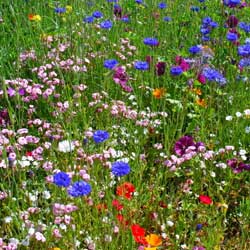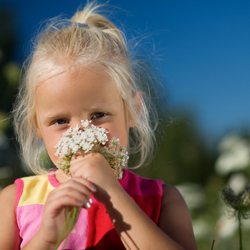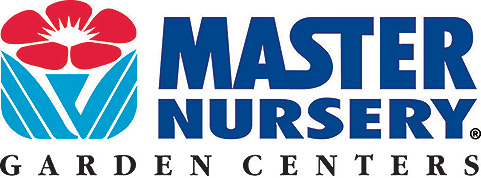Turf can be tough to deal with. Perhaps it’s causing you to tear out your hair. Maybe you’re swearing to tear out the turf instead. You know, there could be some good reasons to do just that…
Classified as semi-arid, Tri Valley gardening can be challenging, especially during extra dry years. Many of our favorite plants, including turf, require more water than naturally falls. When you think about this, you may decide to turn off the faucet, put away the lawn mower and do something else.
But what then?
Consider planting a meadow…
In fact, numerous cities and counties in California encourage their residents to do just that. Here are some tips to get you started.
Considerations
- Check with your local zoning department to determine if regulations exist that could limit your plant selections. Some homeowner associations and communities with restrictive covenants also dictate types of plantings.
- The first step is to remove the existing lawn. Depending on your time period, budget and patience, various methods are effective (just ask us).
- What is the exposure of your future meadow? Be sure to choose plants suited for full sun, partial shade or shade.
- Most meadow plants will not tolerate heavy foot traffic. If you plan to walk through the meadow, include paths of gravel, mulch or stepping-stones in the plans.
- Remember, unlike a lawn, a meadow’s appearance changes throughout the year. Therefore, carefully choose the “look” and the plants to be attractive throughout several seasons.
- After planting, meadows take time to develop. If you’re in a hurry, meadow sod is now available. Just roll it out! You can also cut out planting spaces, insert other larger plants or shrubs and use the pieces elsewhere. Of course, you may also plant your meadow using seeds, plants and bulbs.
Determine Type of Meadow
How do you want your meadow to look? If planting with all grass, remember shorter grasses are usually stiff while taller forms usually wave with each breeze. Some meadows have a variety of plants growing to varying heights. These meadows may include perennials with evergreen grasses and small shrubs.
Many people choose a shorter native grass such as Dune sedge (Carex pansa) for a natural look. Growing to 15-24″ tall, it flops over to create mounds when planted in mass. One advantage of using natives is after establishing, little or no additional watering is required. Another advantage, as these meadows generally benefit from only one or two mowings per year, you’ll be saving a lot of time.
Do you want blooms in your meadow? Remember most natives bloom in the spring. Unless growing a “purely native” meadow, consider extending the flower season by including non-native plants to bloom later in spring, summer and fall. Perennials and bulbs provide a changing scenario of textures, height s, and colors. Some gardeners include herbs in their meadows. These include pennyroyal, yarrow, thyme, hummingbird sage or chamomile.
Inter-planting taller ornamental grasses and shrubs around or throughout the meadow will add height and winter interest. Many contribute color such as Deer grass (Muhlenbertia rigens), also a California native, growing 3-4′ high in beautiful pink clumps.
Of course, people aren’t the only appreciators of meadows. It puts out a welcome mat for wildlife. Often persisting throughout the winter, meadow plants grow seeds and habitat for birds and butterflies.
So, if you’re tired of swearing at the water bill and the lawnmower, give a meadow a try!



